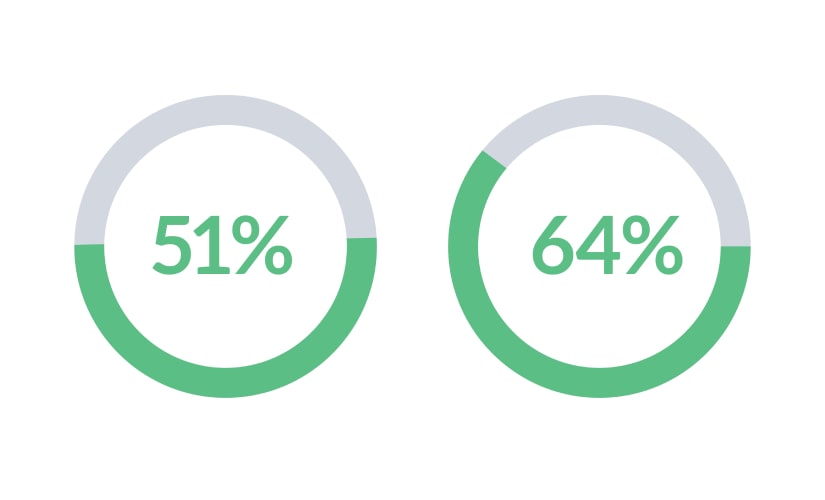Patient portals are secure online websites that give patients 24/7 access to personal health information. Unfortunately, they aren’t receiving the attention they deserve, since EHR companies tend to be tight on R&D resources. As a result, these companies have not yet been able to meet their full potential in terms of user needs, i.e. patient portal needs. This scenario has left many organizations with mediocre solutions that are incapable of adding value to the organization in the long term.
Understanding the Goals of Patient Portal
A patient portal’s aim should be to improve the quality of care by engaging patients as active participants in their care. Its functions may definitely vary – from allowing patients to view laboratory test results to immunizations, medications, and patients sending secure messages to their physician. However, the foremost step of making a patient portal user-friendly is to allow the users to navigate it effortlessly.

As an example, let’s consider a scenario where the patient’s task is to view his test reports. When the patient interacts with their test result, they need to know –
- the purpose of the test,
- the interpretation of the result,
- and the course of action to take up next.
Refining interactions such as these to be smooth-sailing go a long way in enhancing patient-centered care.
Examining the Areas of Improvement for Patient Portal
When it comes to the EHR market, there are few providers with the requisite software expertise to undertake the complex job of switching EHR vendors. One cannot avoid the fact that the system has to fulfill Meaningful Use/MACRA requirements. While many fulfill these requirements, they are not properly tested. The core functionality is missing most of the time, as a result. A lot of complaints tend to spring up as patients begin using these portals. These commonly include –
- Main features that lack functionality
- The designed platform is not user-friendly
- Platforms work only on selected browsers
- The process of registration is difficult for the patient and needs staff intervention
- Lack of pertinent data from the EHR

The popularity of patient portals still seems to be limited in the US, despite their long-proven benefits and advantages. Also, research shows that although a provider can make these portals available for use, there isn’t any clear evidence proving that they help improve the patients’ health.
Even the most elementary portals allow patients to access information like doctor visits, medication summaries, and lab results. Few of those which are advanced allows the patient to refill prescriptions, schedule non-urgent appointments, and exchange secure messaging with their providers.
Instead of making the patient portals aesthetically appealing, the stakeholders should focus on enhancing the flow of information and providing patients with tools to take part in their healthcare routines. Doing so will prove to be more impactful in the long run.
It is important to involve the patients in the design process if the goal is to boost engagement. For example, if the portal is clunky and difficult to navigate, the patient is bound to get discouraged. Most of the patients are not aware of the medical terminology included in their health information. Thus, for a portal to be effective it should have easy-to-understand visuals.
Usage of Patient Portal
Patient portal is becoming increasingly popular throughout the healthcare industry. The National Coordinator for Health Information Technology (ONC) report says 64% of the hospitals gave access to their patients. Their patients can view, download, and transmit their health data. Apart from this, 51% had the ability to secure messages with doctors.

By developing a good understanding of all that a patient portal can do, it is possible to design a portal that will help boost patient engagement. While designing a patient portal, make sure that it provides the highest quality experience to your patients. This can be done by –
- Making the portal mobile-friendly: The way to increase patient engagement with the portal is to make the portal mobile-friendly. Nearly two-thirds of patients prefer to review their health information and make appointments from their mobile devices.
- Enhanced user experience: Clunky portals can discourage patients from using them. A clear navigation system enables a patient to easily find what they are looking for. If the medical terminology is presented in layman’s terms then patients will be able to fully understand all the information. The use of visuals such as charts and other infographics can help translate the information into simple language for the patients.
Additionally, the portal should make it easy for the patients to sign up. One example of this could be allowing the patients to use their email ID rather than creating an entirely new username. - Scheduling an appointment: The option of scheduling an appointment over the portal should be seamless for the user. Making this process hassle-free can improve the overall patient experience.
- Secure Messaging: Another way to enhance patient engagement is secure messaging, wherein patients can connect directly with their healthcare professionals and ask questions about their health without having to schedule an appointment. Notification features can engage the patients with the portal. When they have new messages or updates they can view the same without logging into the portal.
- Integrating the portal with Electronic Medical Records (EMRs): EMR, when associated with the patient portal, can automatically update your medical records.
- Training and educating the patients about patient portal availability: Making the patient portal available would not be enough if the patients don’t know it exists. Educating the patients about the availability of the patient portal can be done by-
- Contacting and informing those patients who would potentially get benefited most from the portal. For example, those with chronic conditions or those who have undergone a lot of therapies and treatment can be encouraged to use the portal.
- Handling pamphlets to patients as they check out of appointments. Explaining to them the benefits they can get from using the portal.
- Sending emails to patients inviting them to sign up for the patient portal.
Patients will have more engagement with the patient portal when they have better outcomes. Make sure your patient portal encourages the patients to use it. In turn, the portal should keep the patient engaged to avoid any sort of boredom.
In recent times, most up-and-coming third party patient portal vendors are getting acquired by major EHR vendors, in order to replace the underperforming portals. Vendors who have invested in research and development will ultimately experience the biggest success in the replacement of the portal market. The best approach should be looking after Meaningful Use/MACRA and towards technologies that provide more innovative patient engagement and care management solutions.









